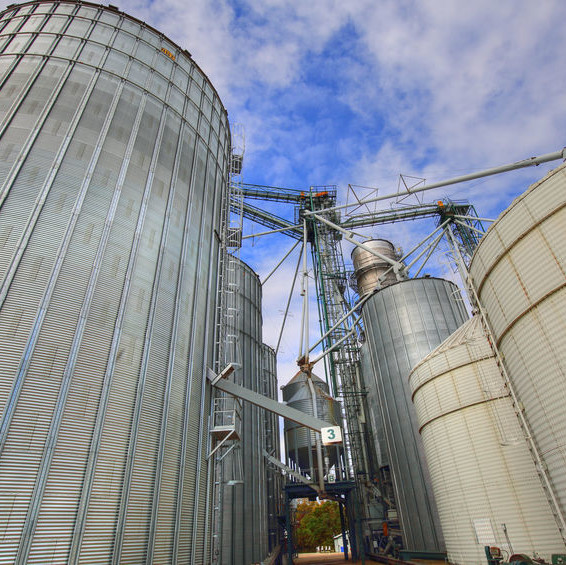
Explosion Mitigation
What is Explosion Mitigation?
Explosion mitigation encompasses all the procedures and safety strategies necessary for the prevention of explosions in industrial manufacturing plants.
Depending on severity, plant explosions can be very serious and may cause serious injuries. In extreme cases, they can claim the life of plant workers in addition to negative economic outcomes.
- Storage vessels (e.g. bins, hoppers and silos) for grain and cereal flours
- Grain elevators
- Pneumatic conveying systems
- Balance bins for bread flour
How does it happen?
An industrial explosion is a violent and damaging release of thermal and acoustic energy. It is often caused by accidental ignition in an atmosphere containing a large quantity of airborne combustible particles. Once ignited the formed flammable dust cloud propagates through the particles dispersed in the air causing a chain reaction.1
For an explosion to occur, three essential components are needed: oxygen, flammable materials and ignition or heat source.
- Oxygen: Always present in the plant surroundings.
- Flammable material: mainly combustible substances such as gas, vapors, mists or dusts from foodstuffs suspended in the air. Most hazardous types are typically fine particles smaller than 420 microns which have a very low density and low terminal velocity which can remain suspended in the air for very long time.2,3
- Ignition/Heat source: Electrical equipment and installations or any source of heat (spark or flame). Dust often triggers an explosion event and burning occurs at the surface of a substance; thus, particles with high surface area to volume have higher probability to combust especially at adequate heat/air ratios.
A spark may be caused by an electric failure or by metal–metal accidental collisions, common in handling tools. Other reasons include an increase of surface temperature in electrical equipment, especially if it exceeds the ignition temperature of the surrounding gas or mixture of airborne substances.4
Application
Explosion mitigation is based on controlling the three sources of combustion. Measures for the prevention of explosions include:4,5
- Installation of dust extraction or venting systems for storage vessels (pressure/vacuum relief systems).
- Provisions for fire suppression in storage vessels.
- Installation of fully enclosed pneumatic conveying systems.
- Using HVAC systems to increase relative humidity and decrease temperature in high risk and material handling areas.
- Installation of water sprays, where possible, can help reduce dust formation. The presence of small amounts of water can effectively suppress formation of dust.
- Proper ventilation and air refreshment of high risk areas.
- Establishment of quality specifications for particle size distribution and moisture content of bulk raw materials.
- Use of pneumatic conveying systems that cause minimum attrition and material degradation.
- Installation of an inert gas purging system for small compartments to help remove the oxygen needed for combustion.
Considerations for flours
- As the fat content of food dust increases, its caloric content and combustibility increase as well (burning effect is much quicker and more violent). This is particularly critical when handling soy flours.
- As the moisture content of flour increases, the dust becomes more clumpy and heavier, thus making it less likely to combust.
- As the particle size of the dust increases, the less likely it is to burn.
- Air classified and cake flours can pose the highest risk in cake making operations. Adequate mitigation measures should be exercised in such environments.
References
- Cheremisinoff, N.P. “The Basics of Dust Explosions.” Dust Explosion and Fire Prevention Handbook: A Guide to Good Industry Practices, Scrivener Publishing LLC, John Wiley & Sons, Inc., 2014, pp. 29–62.
- Mills, D. “General Operating Problems.” Pneumatic Conveying Design Guide, 3rd edition, Butterworth-Heinemann, Elsevier Ltd., 2016, pp. 606–616.
- Mills, D. “Health and Safety.” Pneumatic Conveying Design Guide, 3rd edition, Butterworth-Heinemann, Elsevier Ltd., 2016, pp. 689–710.
- Ortega-Rivas, E. “Size Reduction” Unit Operations of Particulate Solids: Theory and Practice, 3rd edition, CRC Press, Taylor & Francis Group, LLC, 2012, pp. 202–203.
- Cowell, A. “Small-scale Bulk Handling Operations” Bulk Solids Handling: Equipment Selection and Operation, Blackwell Publishing Ltd, 2008, pp. 250–282.

